Aug 29 2016
Sunday: Training & Racing
Sunday breakfast in the beautiful garden of our friends’ house in Břeclav. Their garden is really a miracle. I am afraid we will never even approach this level of perfection. I am too sloppy and not really interested in gardening, and Romana doesn’t have enough time. Still, my doubles partner Radek, who is a garden architect, has redesigned our garden and we will implement the new design. But having breakfast looking at this garden in Břeclav, with nice people, was a treat.
My first race was in the afternoon, and I decided to do a light steady state session in the morning. There is a canal branching off the river, so I figured I could do the training there without hindering the ongoing races.
Of course I managed to mess up this plan a bit. Instead of doing a steady state as a “just row”, I decided to try out the 4x(4/3/2/1m)/3m rest that I had programmed into the SpeedCoach. That was OK but on the first interval I found out that the canal is a dead end, shorter than 10 minutes. So I had a turn in the first interval, and the second interval brought me back on the river for three minutes.
Luckily they were doing 500m races at that point in time, so I had the river for myself.
The third and fourth interval were on a quite narrow and windy part of the river, and paces were all over the place, mainly because I had to steer a lot. Also, wind and current varied a lot. I tried to do some estimates of the current on rowsandall.com, but I am not sure if I got it right. Still I can say that I rowed between 150W and 220W, and that is also how it felt, 3 on a 10 point Borg scale of Rate of Perceived Exertion. Or is it Perceived Rate of Exertion? Or Perceived Exertion?
The “Training with a power meter” book says that you should use the Borg scale at the beginning of the earlier intervals, so I guess that means that you have to estimate how hard it feels, not how tired you are.
I managed to sneak back to the rowing club just before the 1500m races would start. Got a friendly reprimand from one of the umpires for rowing on a course that was closed for training. He was right of course, but I just wanted to do some steady state.
Work Details
#-|SDist|-Split-|-SPace-|-SPM-|AvgHR|MaxHR|DPS-
01|00817| 04:00 | 2:26.8| 18.5| 140 | 150 | 11.0
02|00649| 03:00 | 2:18.6| 20.7| 153 | 159 | 10.5
03|00368| 02:00 | 2:43.0| 20.5| 153 | 161 | 9.0
04|00231| 01:00 | 2:9.8| 23.0| 160 | 165 | 10.0
05|00828| 04:00 | 2:24.9| 18.8| 144 | 152 | 11.0
06|00646| 03:00 | 2:19.3| 20.7| 158 | 162 | 10.4
07|00423| 02:00 | 2:21.8| 22.0| 162 | 165 | 9.6
08|00218| 01:00 | 2:17.6| 23.0| 166 | 168 | 9.5
09|00779| 04:00 | 2:34.0| 19.0| 145 | 153 | 10.2
10|00596| 03:00 | 2:31.0| 20.7| 153 | 157 | 9.6
11|00400| 02:00 | 2:30.0| 22.5| 159 | 162 | 8.9
12|00206| 01:00 | 2:25.6| 23.0| 162 | 165 | 9.0
13|00815| 04:00 | 2:27.2| 19.0| 139 | 148 | 10.7
14|00635| 03:00 | 2:21.7| 20.0| 152 | 156 | 10.6
15|00421| 02:00 | 2:22.5| 22.0| 157 | 161 | 9.6
16|00222| 01:00 | 2:15.1| 23.0| 164 | 168 | 9.7
Workout Summary
--|08254| 40:00 | 2:25.3| 20.3| 151 | 168 | 10.2

In the afternoon I rowed two races in the eight. I rowed the mixed Masters eight, where we had the pleasure of rowing in Břeclav’s new Empacher and won. At the end of the afternoon I was drafted for a 300m sprint in a Men’s eight. We were up against the locals (with seats 7 and 8 taken by the Czech Pair who came 7th in Rio) in their new boat, and our boat was a mix of Juniors and Masters from various clubs, in the heavy 1987 Hudecek. Of course we came second (they beat us by a length over 300m), but we got a few nice bottles of wine for giving the Břeclav men competition.
In other races, daughter Lenka rowed two finals. They came third in the girls quad Final in a race that was re-started when they were leading after 500m and the two other boats clashed (umpire being the trainer of one of the quads in the clash). They also came third in the doubles Final.
My son Dominik enlarged his medal collection by steering a winning boys quad and winning a boys double final.
That was the end of a nice small regatta. While I was out sprinting in the eight, the kids had loaded the trailer, and apart from a small Sunday afternoon traffic jam into Brno the trip home was uneventful.
Dinner on our terrace, still 30 degrees at 7pm.

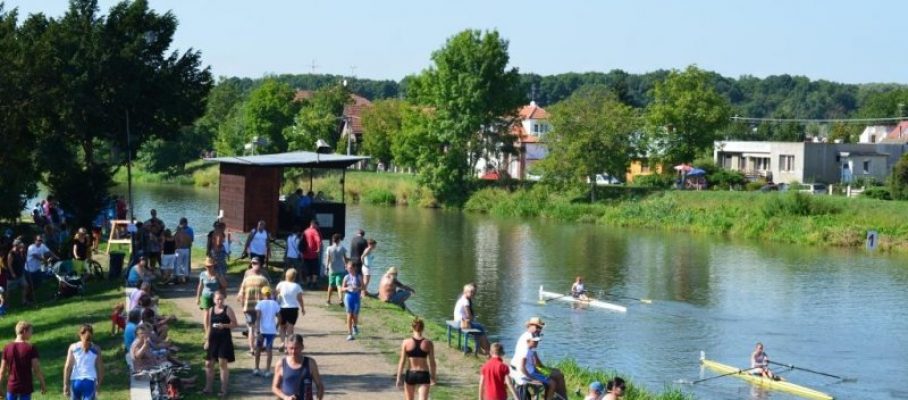
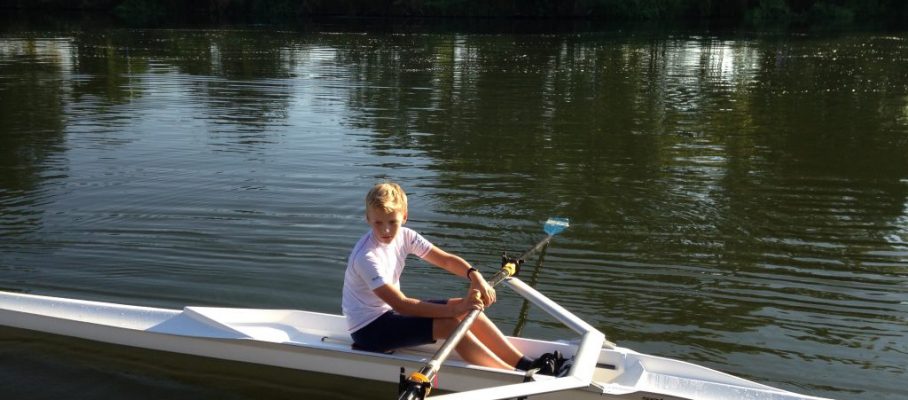
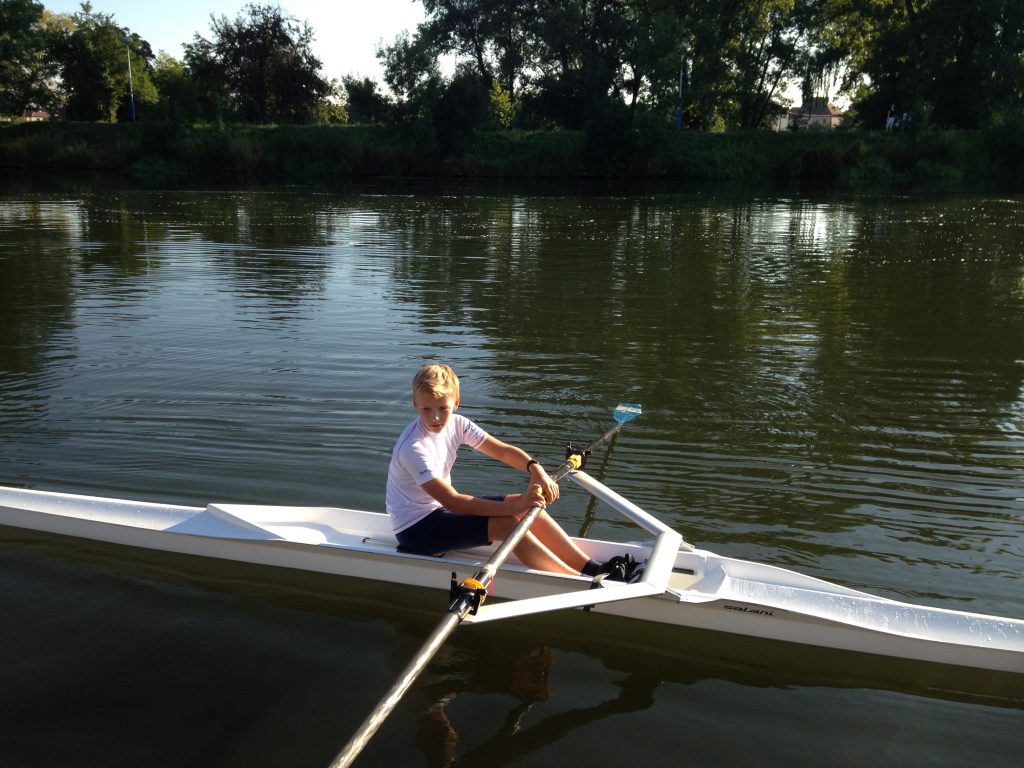

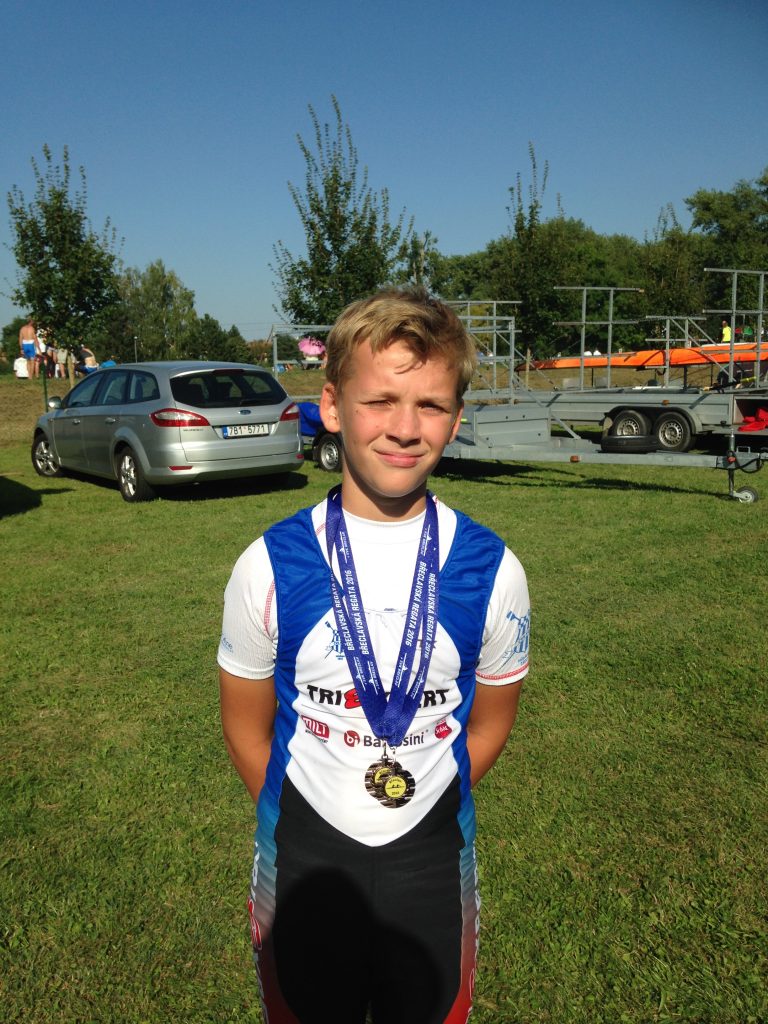
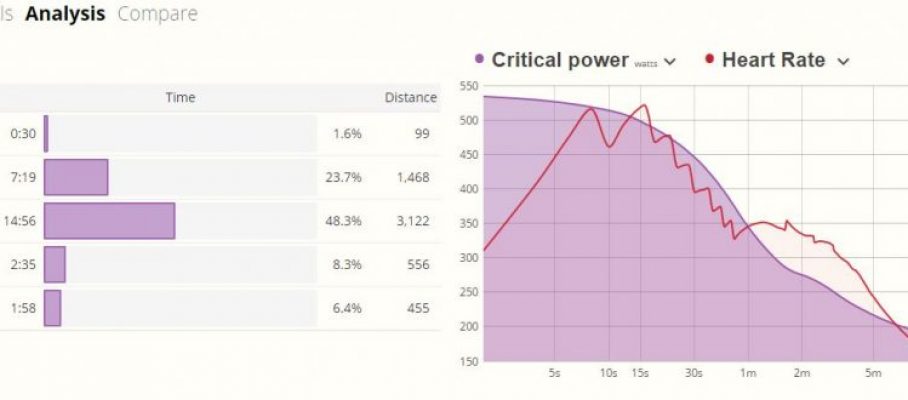
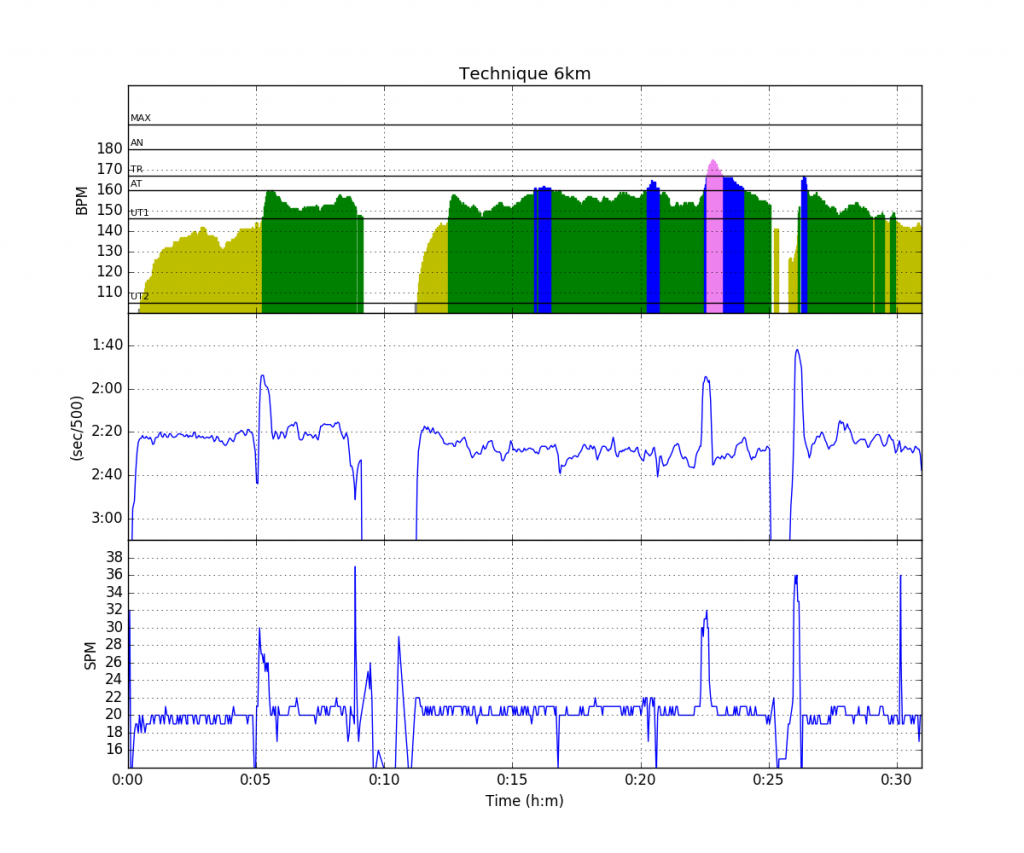
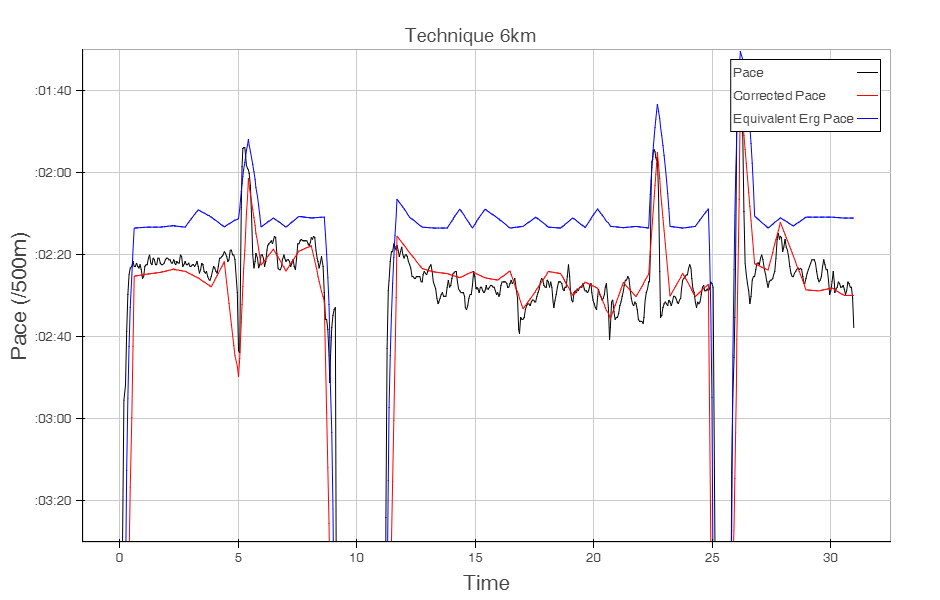
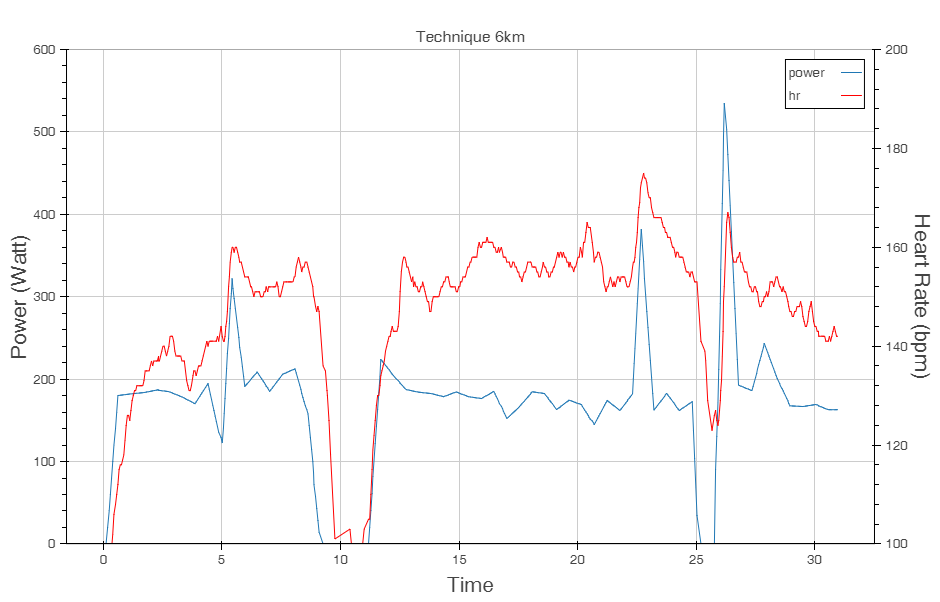
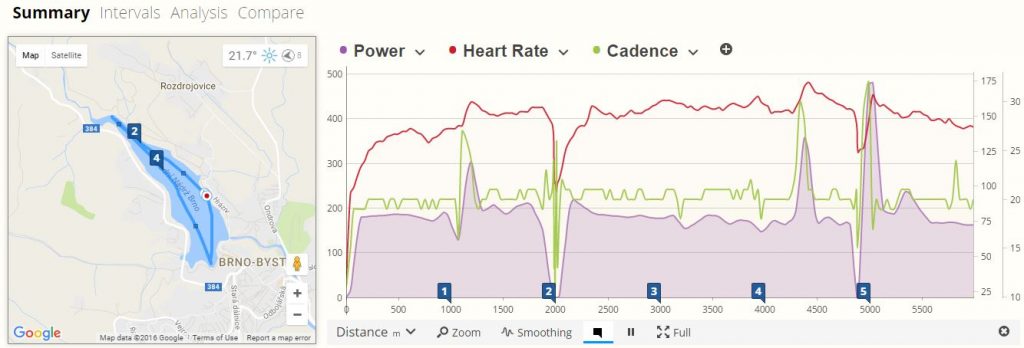

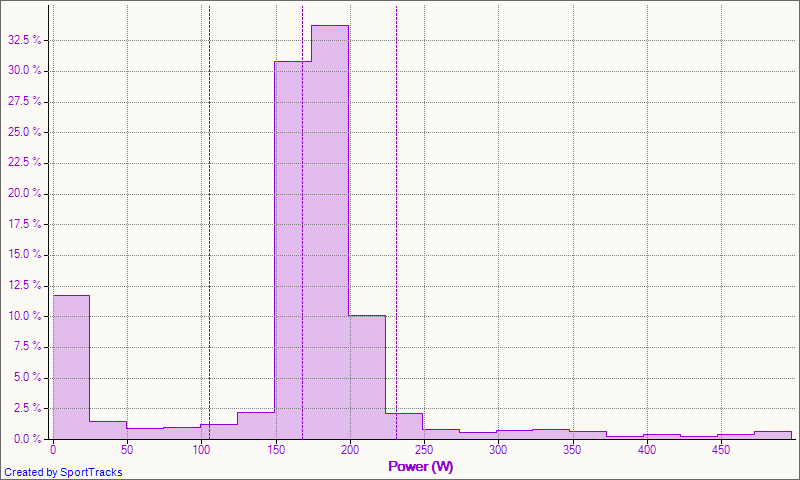


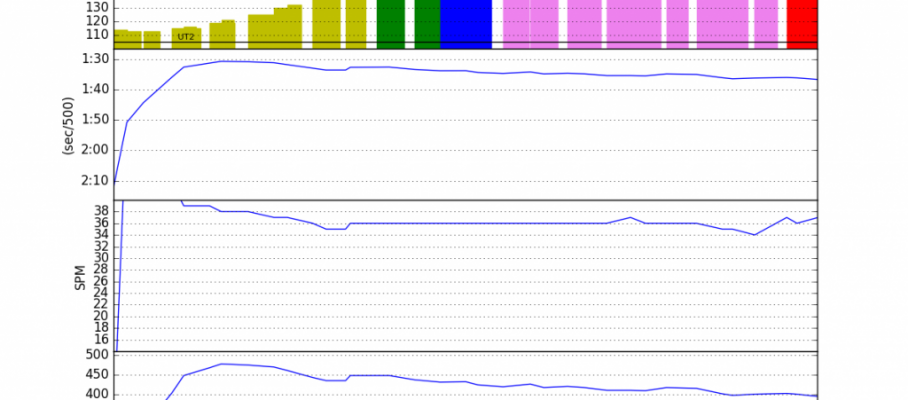
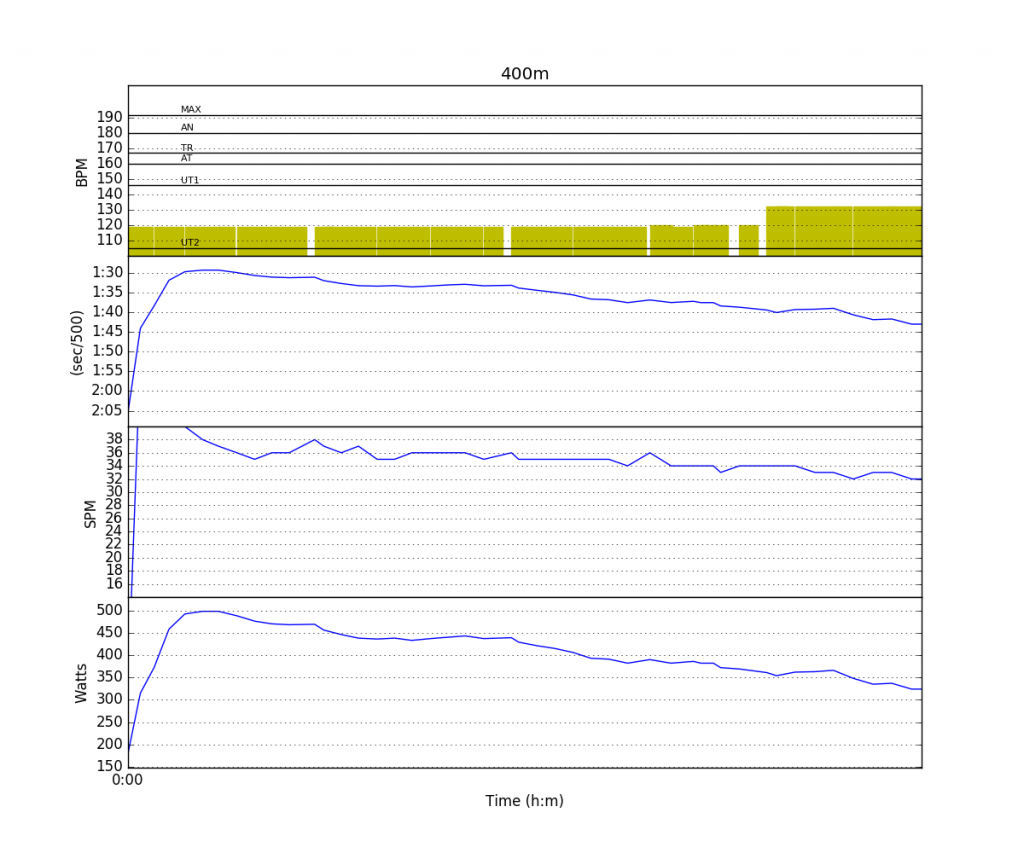
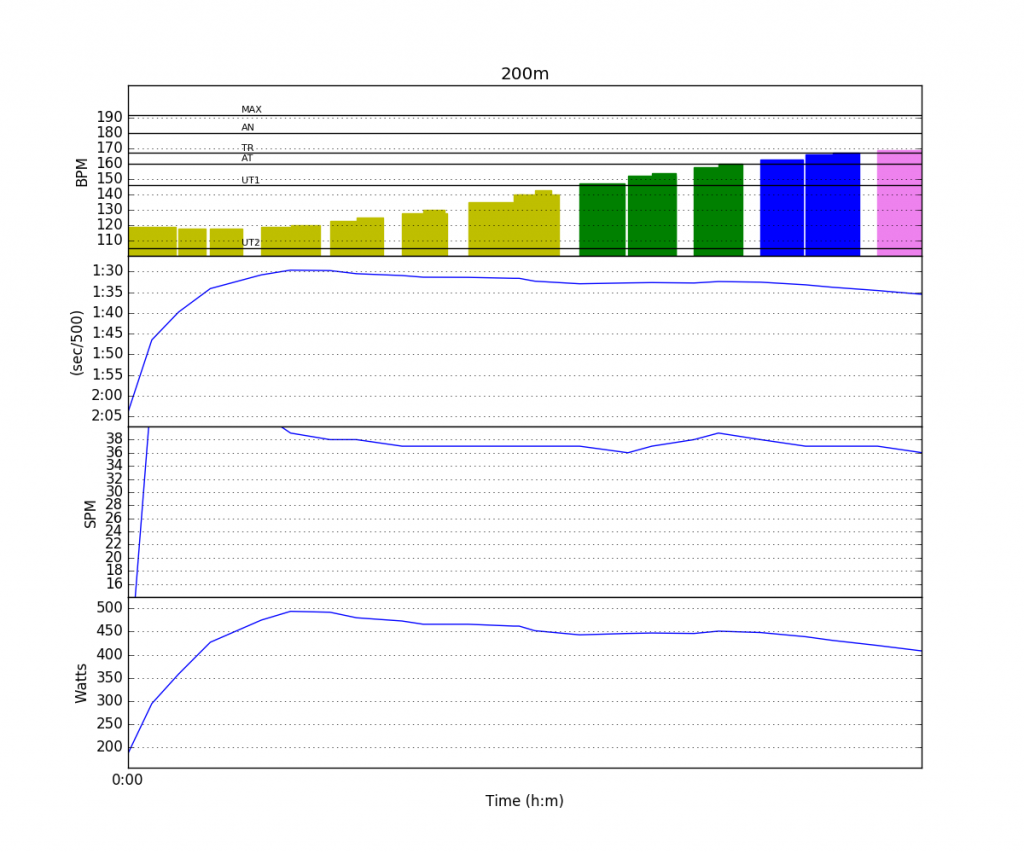
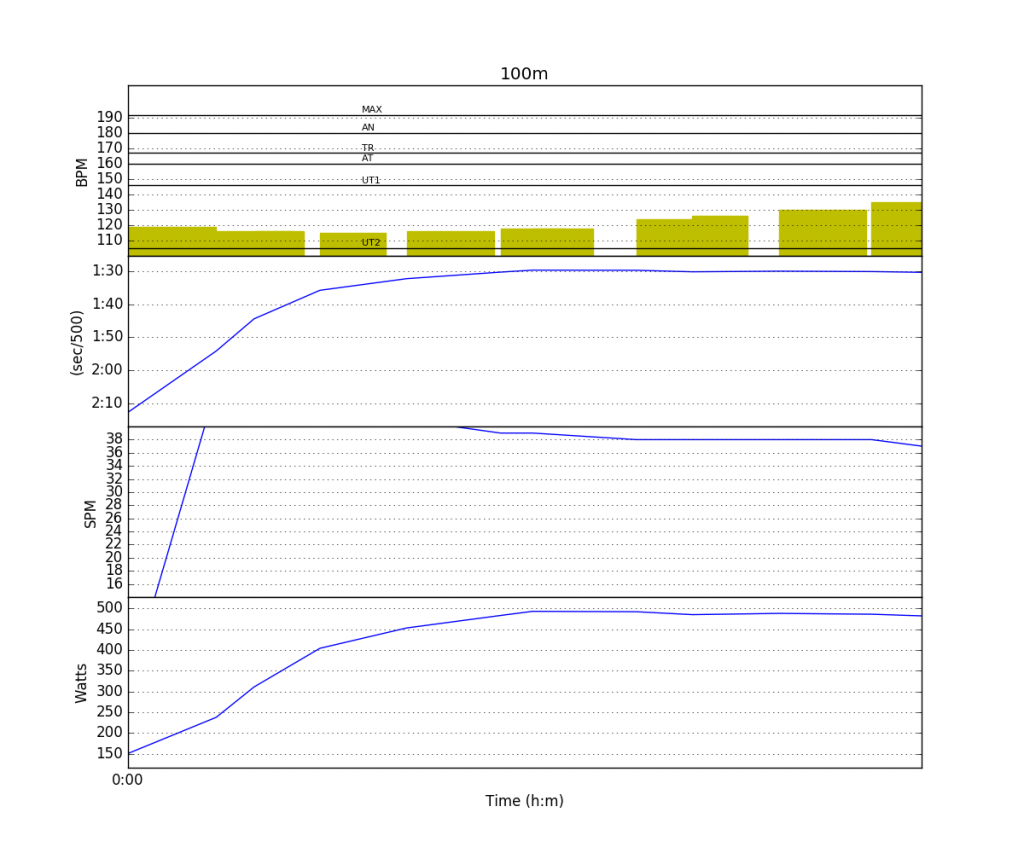
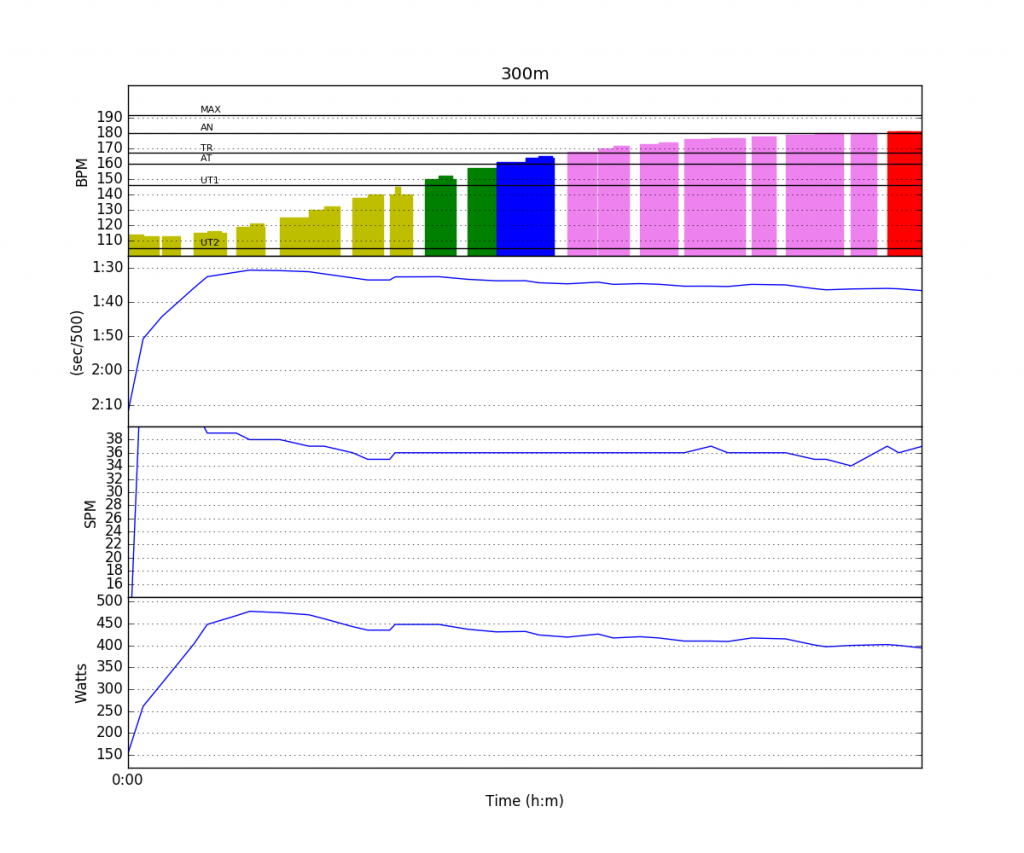
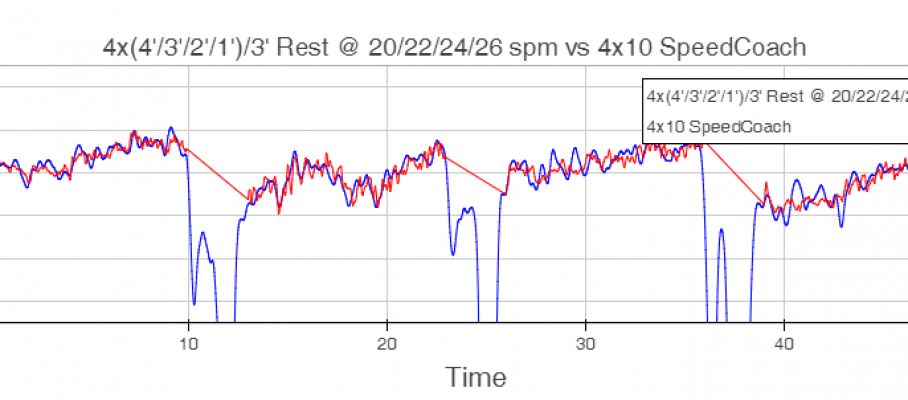



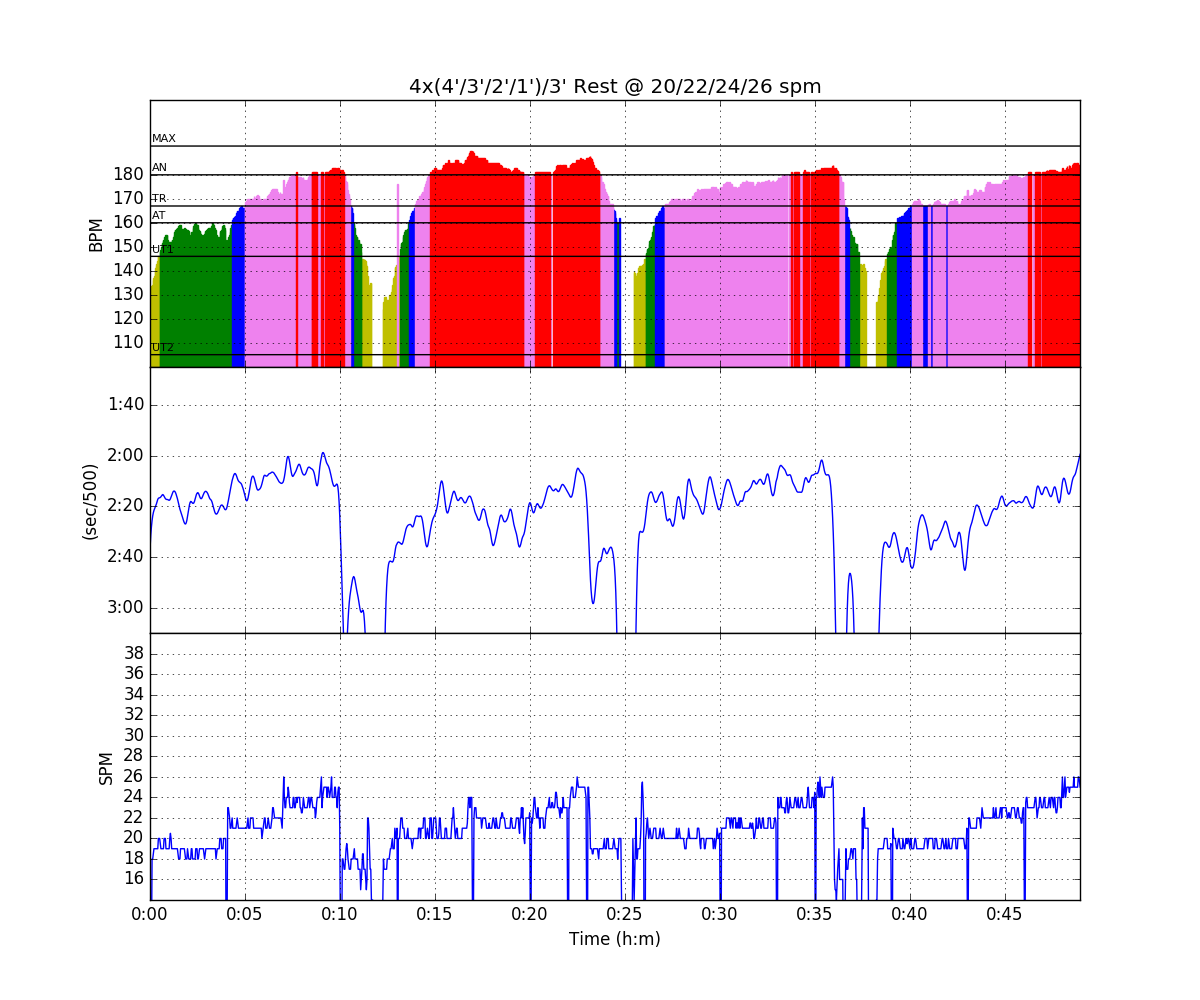

Aug 31 2016
Tuesday – Bike & Lactate step test
Morning
Commute to work on the bicycle.
https://www.strava.com/activities/693940250/analysis
Average heart rate 132 bpm so definitely a regeneration workout. Although, at one point, at the beginning of what Strava calls the “Olomoucká I” segment, a 500m long climb of 27 meters elevation difference (5% average grade, 10% max grade), another cyclist was just behind me, and I had to push a bit harder to avoid him taking over. That pushed my heart rate up to 176 bpm.
Evening
The post summer vacation / pre winter season lactate step test on the Concept2 erg. I did 6 intervals of 10 minutes at increasing power, taking a finger prick lactate measure after every step.
Workout Summary - media/20160830-194351-sled_2016-08-30T20-14-40ZGMT+2.strokes.csv
--|Total|-Total-|--Avg--|Avg-|-Avg-|-Max-|-Avg
--|Dist-|-Time--|-Pace--|SPM-|-HR--|-HR--|-DPS
--|14906|70:04.0|02:21.0|21.6|153.4|176.0|09.9
Workout Details
#-|SDist|SPM-|AvgHR|MaxHR|DPS-|Lactate|Power
00|02494|21.1|138.0|153.0|09.9| 1.7 | 170
01|02540|21.4|148.9|162.0|09.9| 1.6 | 180
02|02520|21.6|156.5|165.0|09.7| 1.7 | 190
03|02552|21.9|160.9|172.0|09.7| 2.0 | 200
04|02554|22.5|166.7|176.0|11.2| 4.6 | 210
05|02246|21.0|149.1|159.0|08.9| 3.1 | 160
I started at 170 W and increased with 10W after each interval. After reaching 4.6 mmol/L at 210W and feeling like you feel at 4.6 mmol/L, I didn’t continue to 220W but took the last interval as a cooling down.
The goal is to determine the threshold, under which lactate is flat. For me, this seems to be just under 200W, but I will confirm this next week by rowing 6x10min at a constant power of 195W, taking a lactate measurement every 10 minutes.
Here is the graph:
The “Model” line is a line that I “fitted” through last year’s data. For comparison, here is the graph that I compiled in November 2015.
So in comparison with November 2015, my steady state lactate level is higher, the step is more pronounced and seems to be shifted to the left. I guess that corresponds to being in a worse shape, fitness wise. Vacation effect, I think.
We’ll see if this is confirmed next week, but it looks like my steady state should not go above 195W.
By sanderroosendaal • Uncategorized • 1 • Tags: concept2, lactate, OTE, rowing, test, testing, training